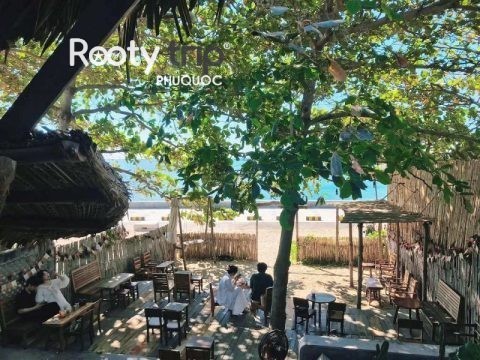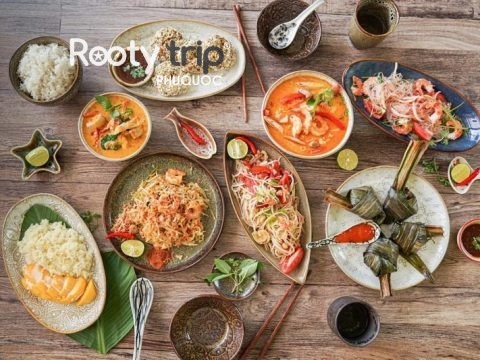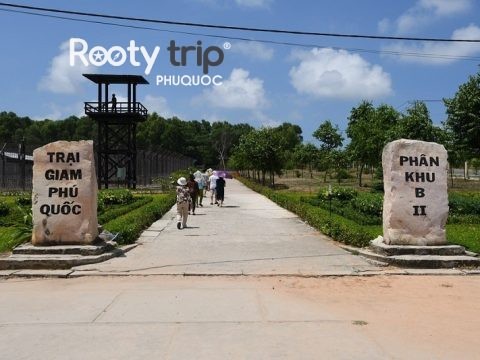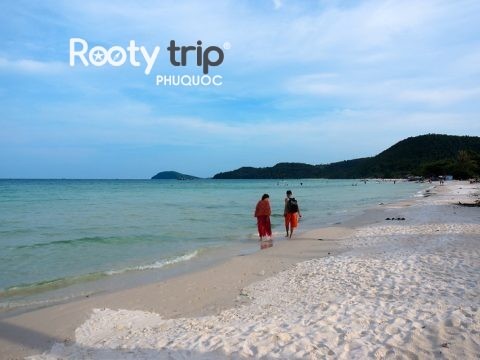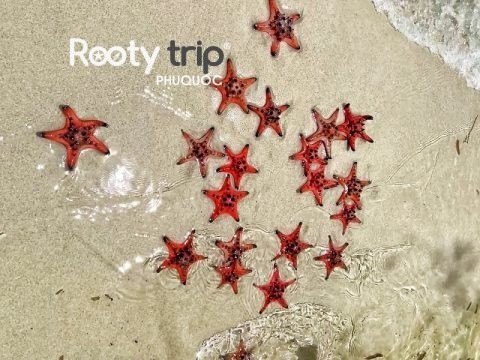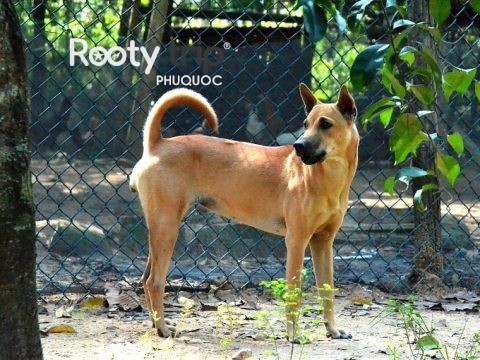Ultimate Phu Quoc Travel Guide: What to Know Before You Go
11/06/2025If you’re looking for a journey that blends breathtaking nature, cultural heritage, rich cuisine, and world-class relaxation, then Phu Quoc is your ideal destination. With the support of Rooty Trip – a trusted travel company specializing in Phu Quoc travel guide – you will have the opportunity to explore the pearl island in a complete, convenient, and unforgettable way.
Unique geographic location of Phu Quoc Island

Phu Quoc Island, with an area of about 574 km², is Vietnam’s largest island, located in the Gulf of Thailand. It belongs to An Giang Province and includes one main island and 21 surrounding islets. The landscape is diverse – from white-sand beaches and coral reefs to lush forests and granite mountains. The highest point is Mount Chua, at 603 meters, located in Phu Quoc National Park. Its 150-kilometer coastline features famous beaches such as Bai Sao, Bai Truong, and Bai Khem.
Stable tropical climate year-round
Phu Quoc has a tropical monsoon climate, characteristic of Vietnam’s southern coastal regions, with warm weather throughout the year. The island experiences two distinct seasons:
- Dry season (November to April): Ideal for travel, with sunny skies, calm seas, and low humidity. This season is perfect for beach activities, snorkeling, trekking, and island-hopping.
- Rainy season (May to October): Wetter and more humid, especially from June to September. However, it brings lush greenery and is great for nature lovers seeking tranquility.
The average annual temperature remains between 26-28°C, with little fluctuation-perfect for outdoor activities. Annual rainfall ranges from 2,800 to 3,000 mm. Overall, Phu Quoc’s mild climate makes it suitable for travel all year round.
Still unsure when to visit? Check out our in-depth guide on which month is best to visit Phu Quoc to help you plan the perfect time for your island adventure.
Administration – Structure of an Island City
Phu Quoc was recognized as a city under An Giang Province in early 2021. The city includes:
- Wards: Duong Dong (the political and economic center) and An Thoi (the southern gateway and port).
- Communes: Cua Duong, Cua Can, Ham Ninh, Ganh Dau, Bai Thom, Tho Chau (an offshore archipelago), and others. Each area has its role: Ganh Dau and Bai Thom are known for pepper farming; An Thoi is the main fishing port and the departure point of the Hon Thom cable car.
History of formation & Development of the Pearl Island
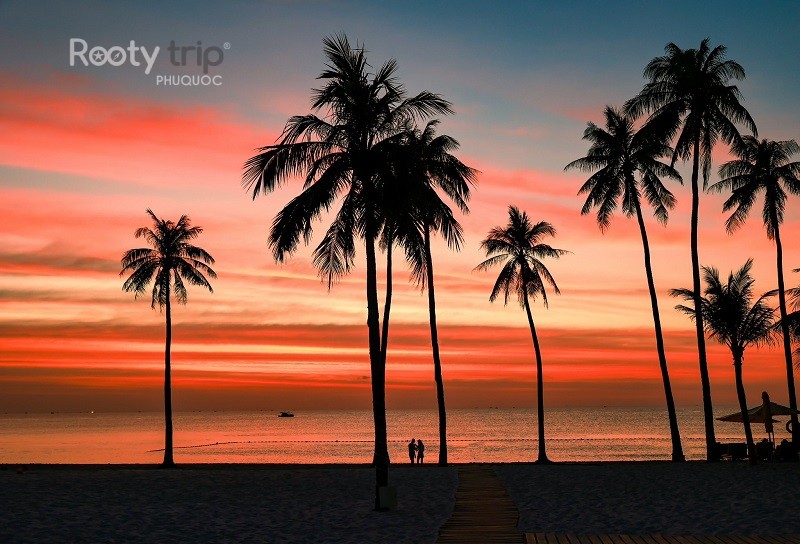
Who discovered Phu Quoc Island?
Historically, the Khmer people were among the first known inhabitants of Phu Quoc. In the 17th century, Chinese and Vietnamese settlers began to arrive. A key figure in the island’s history is Mac Cuu, a Chinese-Vietnamese merchant and official, who played a significant role in integrating Phu Quoc into Vietnamese administrative control during the Nguyen Lords’ rule.
What is Phu Quoc recognized as by UNESCO?
In 2006, UNESCO designated Phu Quoc and the surrounding coastal region of Kien Giang as part of the Kien Giang Biosphere Reserve. The recognition is based on the area’s rich ecosystems, including tropical forests, coral reefs, mangroves, and seagrass beds.
How far is Phu Quoc from mainland Cambodia?
Phu Quoc is located approximately 12 kilometers south of the Cambodian coast. This close proximity to Cambodia has historically been a point of geopolitical interest.
Why is Phu Quoc called the Pearl Island?
Phu Quoc is affectionately known as the “Pearl Island” (Đảo Ngọc in Vietnamese) due to its breathtaking natural beauty, clear turquoise waters, white sandy beaches, and its rich marine resources such as pearls and seafood. The name also symbolizes the island’s value in terms of tourism and economic potential.
Phu Quoc has a rich historical background:
- Ancient times: Initially inhabited by the Khmer people and once ruled by Cambodia before becoming part of Vietnam.
- French colonial period: Used as a place of exile and detention.
- Vietnam War: Home to the largest prisoner-of-war camp in South Vietnam – Phu Quoc Prison, now preserved as a historical site.
- Modern development: Since the early 2000s, Phu Quoc has been planned as a key economic and tourism hub.
Phu Quoc’s economy – From fishing to smart tourism
Phu Quoc’s economy has evolved from traditional roots to a modern structure:
- Traditional sectors:Fishing, agriculture (pepper, sim fruit), and PDO-certified fish sauce production.
- Tourism: The main economic sector, contributing over 60% of local GDP.
- Investment: Billions of USD have flowed into resorts, infrastructure, and smart urban projects.
- Emerging trends: Renewable energy, pearl farming, and high-tech organic agriculture are on the rise.
Culture of the Pearl Island – A unique cultural blend
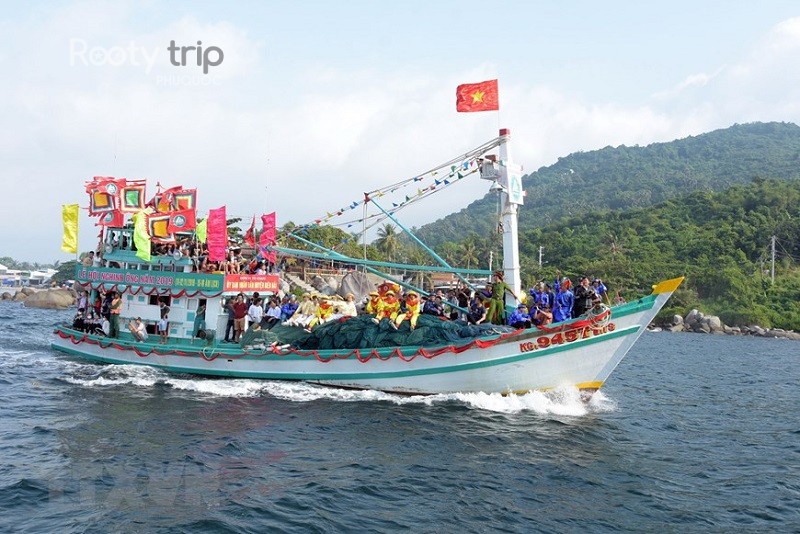
Phu Quoc’s culture reflects a blend of ethnicities and spiritual practices:
- Ethnic communities: Kinh (majority Vietnamese), Khmer, and Hoa (Vietnamese of Chinese origin).
- Festivals: Dinh Cau Festival, Nghinh Ong (Whale Worship), and Tet Lunar New Year.
- Cuisine: Seafood specialties like herring salad, grilled sea urchin, and sim wine. The local fish sauce is a cultural heritage.
- Religious sites: Many temples, pagodas, and shrines, notably Ho Quoc Pagoda and Dinh Cau Shrine.
Phu Quoc tourism – A paradise for relaxation & Experiences
Phu Quoc has emerged as a global destination:
- Beaches: Bai Sao (calm and white sand), Bai Truong (sunset views), Bai Khem (luxury and seclusion).
- Nature: Phu Quoc National Park offers trekking, birdwatching, and ecosystem exploration.
- Attractions: VinWonders, Vinpearl Safari, Grand World, Sunset Town.
- Experiences: Island-hopping tours, diving, night squid fishing, fish sauce factory visits, pepper farms, and local night markets.
- Accommodation: Over 700 lodging options, from budget stays to high-end resorts.
Phu Quoc transportation – Convenient domestic & International access
Getting to and around Phu Quoc is easy:
- By air: Phu Quoc International Airport connects directly to Hanoi, Ho Chi Minh City, and international cities like Bangkok, Seoul, and Kuala Lumpur.
- By sea: High-speed ferries from Ha Tien and Rach Gia take approximately 1.5 to 2.5 hours.
- Local transport: Taxis, Grab, motorbike rentals, electric buses, and bicycles – all tourist-friendly options.
Phu Quoc is steadily developing into a dynamic tropical destination, preserving its cultural identity while embracing innovation and sustainable growth.
To explore Phu Quoc with ease and enjoy high-quality services, travel with Rooty Trip – the trusted companion of thousands of domestic and international visitors to the pearl island.


